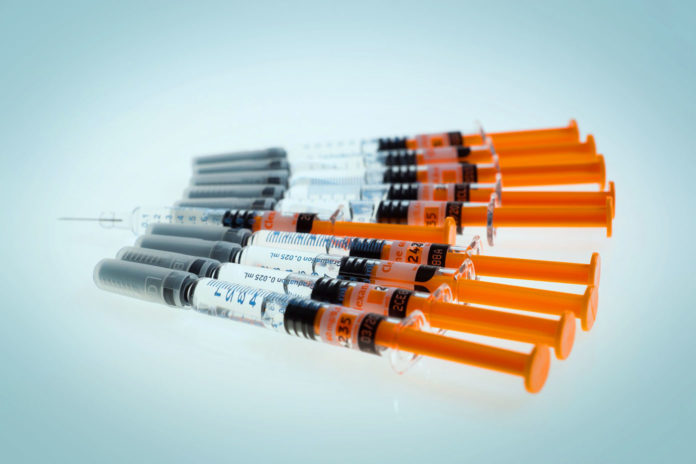Fentanyl is a hundred times more potent than heroin, and a dose the size of a grain of sand is enough to kill you.
Fentanyl’s potency makes it cheaper and easier to purchase and smuggle, so fentanyl is increasingly making its way into the drug trade, masquerading as heroin or other opioids like morphine or OxyContin. But in this environment, the dose is so poorly controlled that the resulting rash of fatal overdoses has become a public health crisis.
What is Canada doing to reduce fentanyl overdoses?
Overdose deaths are preventable, but to intervene we need to set aside issues of criminal justice to provide care. Vancouver’s Insite clinic was North America’s first legal supervised injection site. By a unanimous decision by the Supreme Court in 2011, the clinic operates under an exemption from drug laws. And it saves lives.
Insite tested over 1,000 drug samples from users in Vancouver’s Downtown Eastside and found that over 80 percent of the drugs they tested (mainly heroin) contained fentanyl. This may be an inflated estimate, as people were more likely to submit samples they suspected may be contaminated, but this gives a startling upper limit to how prevalent the problem may be.
Toronto started construction on three new safe injection sites this week as part of a harm reduction strategy, accelerating the timeline to getting medically trained staff available to deal with overdoses.
But in the long term, doctors need to be better trained in addiction medicine. According to broadening training beyond specialists will allow more doctors to diagnose addiction earlier, when treatment is most effective.
Klimas praises new regulations and guidelines that remove barriers to treating opioid addiction, including provincial medical coverage of buprenorphine/naloxone (also called Suboxone). This treatment is proven to reduce overdose deaths.
Do you know what to do if you witness a fentanyl overdose?
If you suspect a fentanyl overdose, this is a life-or-death situation. Call 911 straight away to report it and get medical professionals on site.
To encourage people to call for help, the Good Samaritan Drug Overdose Act is now law in Canada, giving immunity from simple possession charges for those who call 911 in the case of an overdose.
If you believe you are at high risk of witnessing an overdose, look into getting a naloxone kit. Naloxone is a temporary antidote (immediate professional medical care is still needed!) to opioid overdose that can reverse slowed breathing. There is no need to get a prescription, and in some provinces and territories, kits are even free at many clinics and pharmacies.
- Alberta: http://www.albertahealthservices.ca/info/Page15586.aspx
- British Columbia: http://towardtheheart.com/naloxone/
- Manitoba: http://streetconnections.ca/content.php?navigation_id=2294
- New Brunswick (kits available at some pharmacies for $40): http://www.cbc.ca/news/canada/new-brunswick/naloxone-covered-government-1.3925205
- Newfoundland and Labrador: http://www.health.gov.nl.ca/health/naloxonekits/
- Northwest Territories: http://www.hss.gov.nt.ca/sites/www.hss.gov.nt.ca/files/resources/naloxone-availabilty.pdf
- Nova Scotia (available starting Sept 1, 2017): https://novascotia.ca/opioid/
- Nunavut: http://www.cbc.ca/news/canada/north/nunavut-naloxone-overdose-1.3940177
- Ontario: https://www.ontario.ca/page/where-get-free-naloxone-kit
- Prince Edward Island: http://www.cbc.ca/news/canada/prince-edward-island/pei-naloxone-kits-pharmacy-1.4141677
- Quebec: http://metadame.org/profan-formation-naloxone/
- Saskatchewan: http://publications.gov.sk.ca/documents/13/99221-Program%20Kits-Community%20Resources1.pdf
- Yukon: http://www.cbc.ca/news/canada/north/yukon-naloxone-health-centres-1.3960957





































